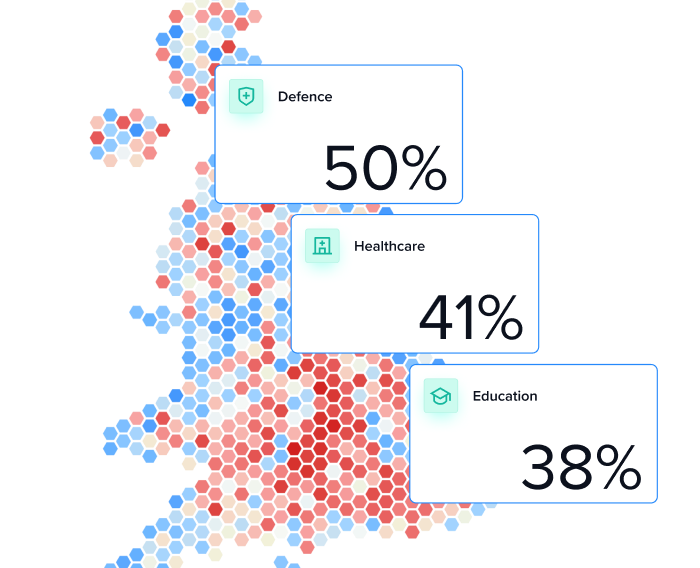Blog/Analysis
Why do pollsters disagree on the size of Labour's lead?
As the first full week of the general election campaign kicks into gear, Labour's lead in the national opinion polls ranges from 14 to 26 percentage points among different pollsters. We covered what we thought Labour's 'real' lead was in our most recent Bi_Focal blog, but today we want to look at one of the main reasons why there is such a large spread among outlets.
A sizeable amount of the variation among pollsters stems from a somewhat existential approach to polling itself — are polls 'nowcasts' of the current moment in time, or are they forecasts of actual voting behaviour if a general election really were held today?
One of the main differences between these two approaches stems from each company's attitude towards undecided respondents. Some firms merely remove undecided voters from their samples altogether (we might call these companies 'the nowcasters'), while others ('the forecasters') either use a 'squeeze' question to try and extract more information from don't knows, or predict how those voters might behave based on their demographics (this might simply be based on their 2019 vote, but others apply a more complex model).

The group which does not make any intervention regarding undecideds tends to produce higher Labour leads. Taking an average of the most recent poll from each company, pollsters who simply exclude don't knows produced an average Labour lead of 23 points (Labour 45%, Conservative 22%), whereas those who make some kind of adjustment saw a large, but reduced lead of 17 points (Labour 42%, Conservative 25%).
The key reason for this gap is the much larger number of Conservative 2019 voters who say they are undecided compared to their Labour counterparts. Almost 1-in-5 Conservative 2019 voters said they were undecided in YouGov's latest survey, compared to just 8% of Labour 2019 supporters. If these voters are immediately excluded from the survey, we end up with a much smaller share of 2019 Conservatives in our overall weighting. Assuming 2019 Conservatives still prefer the current government to the Labour Party (they do), this exclusion will, generally speaking, reduce the headline vote share for Rishi Sunak's party.
In theory, the gap that exists between these two types of pollsters should reduce over the course of this election campaign, and it's likely that the former group will come more into line with the latter as the number of undecided voters reduces.
To track this idea, we have fitted a polling average which is split based on pollster approach towards undecided voters. We find that filtering those who make some sort of adjustment for don't knows takes about 1.8 points off Labour's vote share and adds 2.5 points to the Conservatives when looking over the course of the last 12 months.

At Focaldata, our team has conducted in-depth research in recent months on the best way to account for undecided voters. We have used British Election Study data from the past three elections and analysed the eventual voting behaviour of those who said they were undecided in pre-election surveys. We found that while many undecideds genuinely do not know how they would vote, many of them behave quite predictably when their opinions are probed further. Our analysis suggests that a roughly 60% accuracy rate of predicting respondents' eventual vote could be achieved by asking them a squeeze question and then removing those who said they still didn't know from the sample.
Given this performance, merely removing undecideds from our sample is not the right approach for us. More complex models of imputing vote choice did not improve accuracy enough to offset the potential risks of this approach, so we have opted to use the tried-and-tested method of a squeeze question in our election opinion polls.
With that, we are pleased to announce that our general election poll tracker will launch this week, with regular surveys released in the run-up to the election. Alongside the main voting intention, we will also be gathering data on a plethora of other interesting topics from potential voters. Stay tuned.
Follow us on Twitter/X @focaldataHQ to be the first to find out about our upcoming poll results.
Journalist interested in writing about our poll results or wanting us to ask a particular question in our tracker? Contact patrick@focaldata.com for advanced access to our data.
Source for image of Keir Starmer


